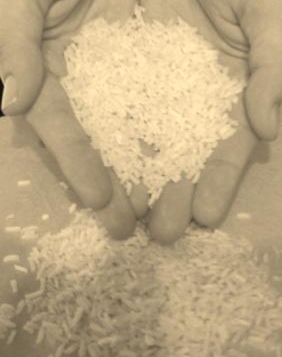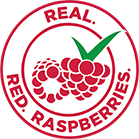Related Research Articles

The United States Department of Agriculture (USDA) is an executive department of the United States federal government that aims to meet the needs of commercial farming and livestock food production, promotes agricultural trade and production, works to assure food safety, protects natural resources, fosters rural communities and works to end hunger in the United States and internationally. It is headed by the secretary of agriculture, who reports directly to the president of the United States and is a member of the president's Cabinet. The current secretary is Tom Vilsack, who has served since February 24, 2021.
The Agricultural Marketing Service (AMS) is an agency of the United States Department of Agriculture; it maintains programs in five commodity areas: cotton and tobacco; dairy; fruit and vegetable; livestock and seed; and poultry. These programs provide testing, standardization, grading and market news services for those commodities, and oversee marketing agreements and orders, administer research and promotion programs, and purchase commodities for federal food programs. The AMS enforces certain federal laws such as the Perishable Agricultural Commodities Act and the Federal Seed Act. The AMS budget is $1.2 billion. It is headquartered in the Jamie L. Whitten Building in Washington, D.C.
In the United States, a commodity checkoff program promotes and provides research and information for a particular agricultural commodity without reference to specific producers or brands. It collects funds through a checkoff mechanism that is sometimes called checkoff dollars, from producers of a particular agricultural commodity and uses these funds to promote and do research on that particular commodity. As stated earlier the organizations must promote their commodity in a generic way without reference to a particular producer. Checkoff programs attempt to improve the market position of the covered commodity by expanding markets, increasing demand, and developing new uses and markets. Checkoff programs amount to $750 million per year.
The Commodity Credit Corporation (CCC) is a wholly owned United States government corporation that was created in 1933 to "stabilize, support, and protect farm income and prices". The CCC is authorized to buy, sell, lend, make payments, and engage in other activities for the purpose of increasing production, stabilizing prices, assuring adequate supplies, and facilitating the efficient marketing of agricultural commodities.

Food policy is the area of public policy concerning how food is produced, processed, distributed, purchased, or provided. Food policies are designed to influence the operation of the food and agriculture system balanced with ensuring human health needs. This often includes decision-making around production and processing techniques, marketing, availability, utilization, and consumption of food, in the interest of meeting or furthering social objectives. Food policy can be promulgated on any level, from local to global, and by a government agency, business, or organization. Food policymakers engage in activities such as regulation of food-related industries, establishing eligibility standards for food assistance programs for the poor, ensuring safety of the food supply, food labeling, and even the qualifications of a product to be considered organic.

The Federal Agriculture Improvement and Reform Act of 1996, known informally as the Freedom to Farm Act, the FAIR Act, or the 1996 U.S. Farm Bill, was the omnibus 1996 farm bill that, among other provisions, revises and simplifies direct payment programs for crops and eliminates milk price supports through direct government purchases.
The National Peanut Board is a program sponsored by the United States Department of Agriculture's Agricultural Marketing Service to support and expand existing markets, develop new markets, and facilitate the economical production of peanuts for export. The board's activities are funded by a mandatory checkoff of one percent on the crop value.
The California Walnut Board or Walnut Marketing Board, founded in 1933, supports the California walnut industry. The organization was originally known as the Walnut Control Board, changing its name to the Walnut Marketing Board in 1962 and to the California Walnut Board in 2008. Its formation was authorized by the Agricultural Adjustment Act (AAA).
The National Pork Board is a program sponsored by the United States Department of Agriculture Agricultural Marketing Service whose purpose is to provide consumer information, perform industry-related research, and promote pork as a food product. The board's activities are funded by a mandatory commodity checkoff program, which requires hog producers to pay a small percentage-based fee each time an animal is sold.
The U.S. Sugar program is the federal commodity support program that maintains a minimum price for sugar, authorized by the 2002 farm bill to cover the 2002-2007 crops of sugar beets and sugarcane.
The Sheep Promotion, Research, and Information Act of 1994 enabled domestic sheep producers and feeders and importers of sheep and sheep products to develop, finance, and carry out a nationally coordinated program for sheep and sheep product promotion, research, and information. The program is funded as a commodity checkoff program.
Marketing orders and agreements in United States agricultural policy allow producers to promote orderly marketing through collectively influencing the supply, demand, or price of a particular commodity. Research and promotion can be financed with pooled funds.
The American Egg Board (AEB) is a United States checkoff marketing organization, which focuses on marketing and promotion of eggs for human consumption. The AEB is best known for its long-running slogan, "The Incredible, Edible Egg", and the Just Mayo scandal.
The United Soybean Board (USB), is the governing body that instantiates the U.S. commodity checkoff program for soybeans. It is made up of 73 volunteer farmer-directors who oversee the investments of the soybean checkoff on behalf of all U.S. soybean farmers. The soybean checkoff is a congressionally-mandated assessment on soybeans, whose proceeds are used to fund soybean research and promotion efforts. The checkoff is managed by the United Soybean Board under the supervision of the United States Department of Agriculture Agricultural Marketing Service. In 2014, the checkoff was $109.1 million.
The Christmas Tree Promotion, Research, and Information Order is a provision of the 2014 U.S. Farm Bill that established a U.S. Department of Agriculture commodity checkoff program for cultivated Christmas trees. The program is funded through a $.15 per tree fee paid by growers. The program creates a marketing program similar to other checkoff programs such as "Got Milk?" or "Beef. It's What's For Dinner". The order was briefly implemented by the U.S. Department of Agriculture's Agricultural Marketing Service in November 2011. After a wave of political criticism the rule that established the program was officially stayed before being passed into law over two years later.

The Agricultural Act of 2014 is an act of Congress that authorizes nutrition and agriculture programs in the United States for the years of 2014–2018. The bill authorizes $956 billion in spending over the next ten years.

The Mushroom Council is a U.S. organization of fresh mushroom producers created and funded through a commodity checkoff program.

The National Processed Raspberry Council is a U.S. organization that promotes and researches processed raspberries. It is part of a commodity checkoff program overseen by the U.S. Department of Agriculture.

The Paper and Packaging Board (P+PB), a commodity checkoff program overseen by the United States Department of Agriculture (USDA), is self-funded through quarterly assessments paid by eligible manufacturers and importers of paper and paper-based packaging. P+PB oversees the work of the Paper & Packaging – How Life Unfolds campaign designed to increase demand for paper and paper-based packaging.
Johanns v. Livestock Marketing Association, 544 U.S. 550 (2005), is a First Amendment case of the Supreme Court of the United States. At issue was whether a beef producer could be compelled to contribute to beef industry advertising.
References
- ↑ "As Required by New Farm Bill, USDA to Allow Christmas Tree Research and Promotion Program to Move Forward Archived 2014-11-29 at the Wayback Machine ", press release, United States Department of Agriculture , Agricultural Marketing Service, April 4, 2014, accessed November 19, 2014.
- 1 2 Electronic Code of Federal Regulations, "Title 7, Subtitle B, Chapter XI, Part 1214 - Christmas Tree Promotion, Research, and Information Order", U.S. Government Printing Office , website current as of November 14, 2014, accessed November 18, 2014.
- ↑ "Christmas Tree Promotion, Research, and Information Order", Federal Register , Col. 76, No. 216, November 8, 2011, accessed November 19, 2014.
- ↑ "Christmas Tree Promotion, Research, and Information Order; Stay of Regulations", (pdf), Federal Register , USDA - Agricultural Marketing Service, November 17, 2011, accessed November 19, 2014.
- ↑ Jackson, David. "Obama team delays Christmas tree fee", USA Today , November 9, 2011, accessed November 19, 2014.
- ↑ "New Christmas Tree Promotion Board Calls for Nominations", Wisconsin Ag Connection via USAgNet, May 29, 2014, accessed November 18, 2014.
- 1 2 3 4 5 "As Required by New Farm Bill, USDA to Allow Christmas Tree Research and Promotion Program to Move Forward", press release, United States Department of Agriculture , Agricultural Marketing Service, April 4, 2014, accessed November 18, 2014.
- 1 2 3 "Christmas Tree Research and Promotion Order Archived 2014-08-15 at the Wayback Machine ", Research and Promotion Programs, United States Department of Agriculture - Agricultural Marketing Service, last modified April 25, 2014, accessed November 19, 2014.